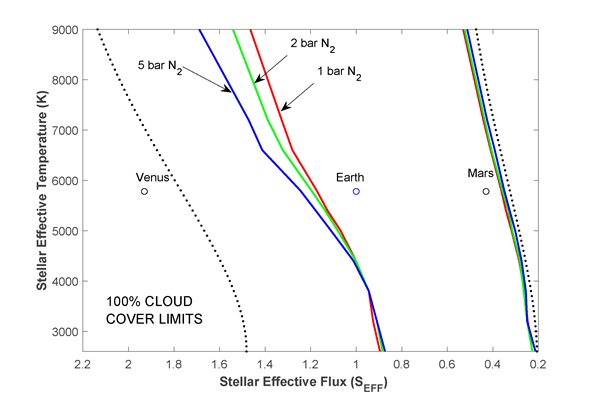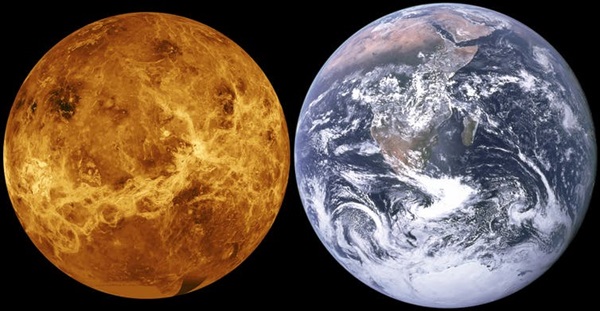This is the first study to directly assess the effect of high nitrogen pressures on habitable zone boundaries. In addition, this work shows that a moist greenhouse may not be possible for planets orbiting F – M stars, and a runaway greenhouse may be triggered more easily than what was previously thought.

Exoplanetary science has grown exponentially over the past 25 – 30 years. It will soon be possible to characterise the atmospheres of potentially habitable planets around other stars. For this purpose, accurately estimating the location and width of the habitable zone (HZ), the main tool used to find these potentially habitable planets, remains essential.
Previous studies have assumed an Earth-like atmospheric N2 inventory for HZ calculations. However, Earth’s N2 pressure has changed over time, suggesting that large variations in background N2 pressures can be expected on rocky planets.
Ramses Ramirez, a research scientist at the Earth-Life Science Institute (ELSI), has calculated new HZ boundaries for planets with background N2 pressures as high as 5 bars, yielding a solar system HZ that is ~20% wider than with the standard 1 bar N2 assumption (Figure 1). More N2 moves the HZ inner edge closer to the star, causing a planet-desiccating runaway greenhouse to occur at a smaller orbital distance. This happens for two main reasons: additional stellar energy is reflected into space at higher N2 pressures, cooling the planet, and clouds may also cool the planet at higher temperatures.
It was thought that a somewhat less aggressive runaway state may occur on Earth-like planets orbiting F – M stars (which includes the Sun). This moist greenhouse happens above ~340 K (assuming a 1 bar N2 atmosphere), after which accelerated photolysis reactions in the stratosphere can result in an Earth-equivalent amount of surface water escaping to space in ~ 4.5 Gyr.
However, using a more realistic model, Ramses’ calculations instead predict that moist greenhouses for planets orbiting F – M stars would not occur because they would succumb to a runaway greenhouse instead. Indeed, he finds that moist greenhouses can only be triggered on planets orbiting A-stars. Such stars emit more energy at blue wavelengths, which is more easily reflected back to space and enables the moist greenhouse.
These results also have implications for the atmospheric evolution of Venus. It is uncertain if Venus was ever able to acquire surface oceans (Figure 2). And, even if it was, the mechanism by which Venus lost its water is unknown.

‘If Venus had acquired any water, it would have likely rapidly lost it in a runaway greenhouse’, says Ramses. Some investigators think that Venus may have undergone a moist greenhouse. However, these results question that possibility.
The paper also mentions other ways by which the inner edge distance can decrease. ‘Planets with high stratospheric temperatures emit more energy to space which is why they can be moved closer to the star’, says Ramses.
Moreover, having additional clouds, higher stratospheric temperatures, or higher N2 pressures, lower the threshold mean surface temperature for runaway greenhouse initiation (to ~300 K or less). This happens because stabilizing climate feedbacks are abruptly overcome at such extreme stellar fluxes, which triggers a runaway at a lower mean surface temperature.
| Journal | Monthly Notices of the Royal Astronomical Society |
| Tile of the paper |
The effect of high nitrogen pressures on the habitable zone and an appraisal of greenhouse states |
| Authors | Ramses M. Ramirez1,2 |
| Affiliations | Earth-Life Science Institute, Tokyo, Japan1 Space Science Institute, Boulder, CO, USA2 |
| DOI | 10.1093/mnras/staa603 |
| Online published date | March 4, 2020 |
